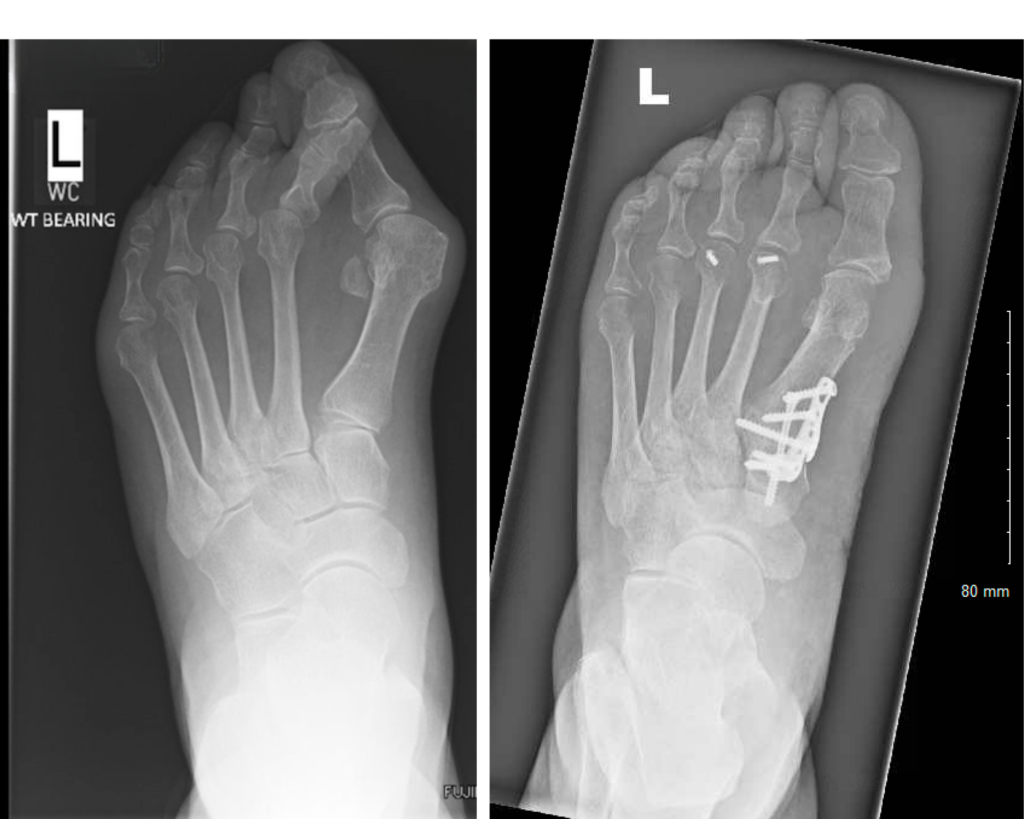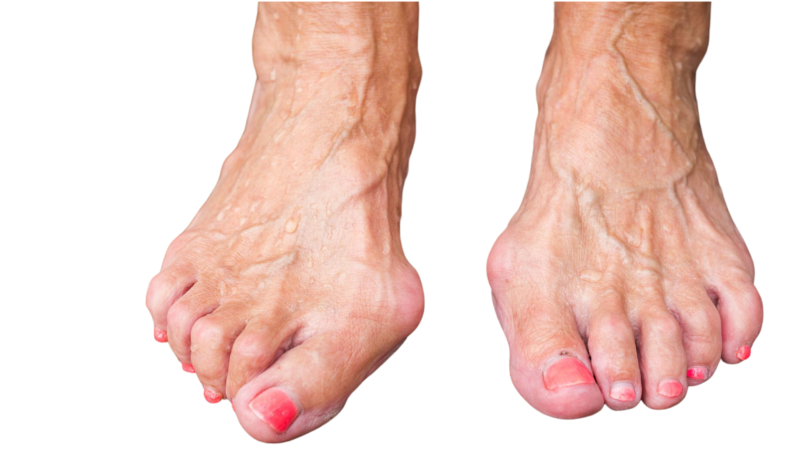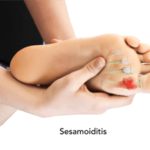What’s a Bunion?
A bunion, medically referred to as hallux valgus, is a common foot condition where the main joint of the big toe is affected. It causes the big toe to tilt towards the second toe and can worsen over time. Bunions are prevalent, and they can run in families, with a higher occurrence in women.
Lapidus Bunion Surgery Correction
The Lapidus bunion surgical procedure is a solution to correct bunions and restore proper foot alignment. It’s an option when non-surgical treatments have been explored and symptoms remain significant. Please note that bunion surgery is not for cosmetic purposes or preventive measures.

The Surgical Journey
- Anaesthesia: Typically performed under general anaesthesia, alternatively, a spinal or regional anaesthetic can be used for leg numbing.
- Incision: A precise incision is made on the inside of your foot over the bunion.
- Bone Realignment: Skilled surgeons remove the bunion bump and carefully adjust the metatarsal bone of the big toe. This bone realignment is usually secured with plates and screws. In some cases, the proximal phalanx of the big toe may also be adjusted and fixed with screws or staples.
- Closure: Dissolving stitches are used to close the incision.
- Dressing: A sterile dressing is applied to the incision site, along with local anaesthesia for initial pain relief. You’ll be provided with a bulky bandage and a flat sole surgical sandal.
Risks and Complications
Lapidus bunion surgery involves standard surgical and anaesthesia-related risks, including:
- Swelling: Expect post-surgery swelling that may last for more than six months during the healing process.
- Stiffness: Your big toe may feel stiffer post-surgery, but physiotherapy can often help improve flexibility.
- Non-Union: There’s a risk that the cut bones in the big toe may not heal together, with higher risks for smokers. Smoking cessation is strongly recommended to enhance healing.
- Change of Position: In some cases, the big toe may gradually revert to its original position, possibly requiring further corrective surgery.
- Pain: Some patients may experience pain under the second toe (metatarsalgia) due to changes in weight distribution, potentially necessitating future surgery.
- Prominent Metalwork: Metalwork in your foot can be removed after six months once the bones have fully healed.
- Nerve Injury: While rare, there is a small risk of injuring or stretching surrounding nerves, which usually resolve with time.
- Infection: Most wounds heal within two weeks, but infection can occur, requiring antibiotics or, in rare cases, additional surgery.
- Blood Clots: There is a small risk of blood clots, and precautions are taken to minimize this risk.
- Chronic Regional Pain Syndrome: A small percentage of patients may experience chronic regional pain syndrome, necessitating specialized pain management.
Post-Operation Care
- Going Home: You will be discharged on the same day as the surgery.
- Weight-Bearing: You can fully bear weight on the operated leg immediately after surgery.
- Follow-Up: You’ll have appointments two weeks and six weeks after surgery, with additional visits based on your progress.
- Work: Sedentary jobs may resume after two weeks, while physically strenuous jobs may require more time off.
- Driving: You can drive when you can comfortably walk in your own footwear.
- Return to Full Activity: High-impact exercises should be avoided for 12 weeks, and you can gradually return to normal activities as comfort allows.
- Flying: Consult your surgeon for guidance and check with your airline regarding flying restrictions post-surgery.
Wellbeing Tips
A healthy lifestyle with a balanced diet, regular exercise, and smoking cessation can promote a smoother recovery. Consider vitamin C supplements before and after surgery. For personalized advice on your general health and well-being, consult your GP.
If you have questions or concerns, our medical and nursing staff are here to help.
Useful Links
For additional information, visit NHS Bunion Information.
British Orthopaedic Foot and Ankle Society information
Last modified: October 29, 2023






